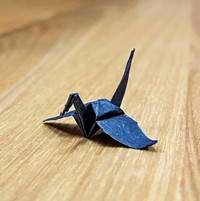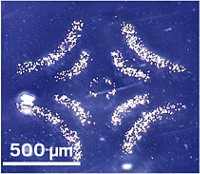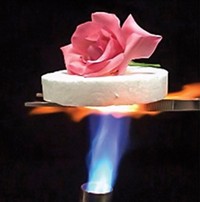Advertisement
Grab your lab coat. Let's get started
Welcome!
Welcome!
Create an account below to get 6 C&EN articles per month, receive newsletters and more - all free.
It seems this is your first time logging in online. Please enter the following information to continue.
As an ACS member you automatically get access to this site. All we need is few more details to create your reading experience.
Not you? Sign in with a different account.
Not you? Sign in with a different account.
ERROR 1
ERROR 1
ERROR 2
ERROR 2
ERROR 2
ERROR 2
ERROR 2
Password and Confirm password must match.
If you have an ACS member number, please enter it here so we can link this account to your membership. (optional)
ERROR 2
ACS values your privacy. By submitting your information, you are gaining access to C&EN and subscribing to our weekly newsletter. We use the information you provide to make your reading experience better, and we will never sell your data to third party members.
Materials
Coated Glass Fibers Make Power From Heat
Energy Conversion: Flexible fibers coated with thermoelectric lead telluride nanocrystals could convert waste heat into electricity
by Prachi Patel
March 28, 2012

By coating glass fibers with lead telluride nanocrystals, chemical engineers have made flexible thermoelectric devices that could one day capture waste heat and turn it into electricity (Nano Lett., DOI: 10.1021/nl300524j). Though preliminary, the work could lead to wrappings for pipes in power plants and car engines that improve energy efficiency.
Thermoelectric materials convert temperature differences into electricity. Today’s thermoelectric products are typically rigid and brittle. They consist of lead telluride or bismuth telluride crystals, or can be made by pressing powders of those materials into disks. To make devices, the crystal or disk is then carved into tiny pillars, an inefficient process that requires lots of the expensive material.
Purdue University’s Yue Wu and colleagues wanted to make flexible devices that could more easily conform to the irregular shapes of engines and exhaust pipes. So they coated inexpensive, bendable glass fibers with a thin layer of PbTe nanocrystals.
The researchers first suspended the nanocrystals in an organic solvent to make an ink. Then they repeatedly dipped the fibers into the ink to give them a 300-nm-thick nanocrystal coating. The researchers found that the fibers have a thermoelectric efficiency (ZT value) of more than 0.7 at 400 K, close to the 0.8 for PbTe crystals.
Compared with conventional thermoelectrics, Wu says, his materials exhibit “the same performance with much less material and lower cost. Our approach is straightforward and scalable.”
Before the researchers can test the fibers’ heat-harvesting capability in a car engine, they need to make their coatings more bendable: The current versions develop tiny cracks when bent significantly, though the cracks reseal when pressure on them releases.





Join the conversation
Contact the reporter
Submit a Letter to the Editor for publication
Engage with us on Twitter